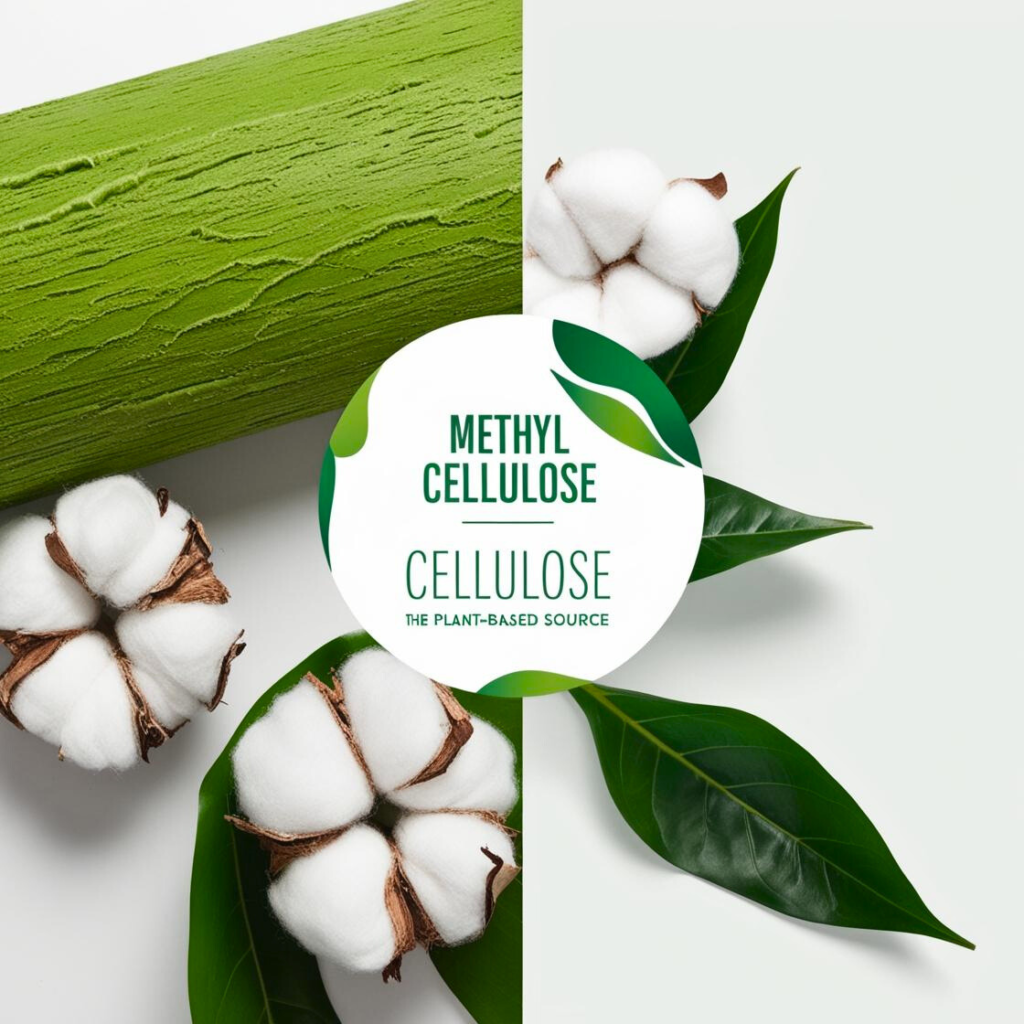INCI name Methyl cellulose
CAS number 9004-67-5
Origin
Methyl cellulose is derived from natural cellulose, which is obtained from plant cell walls (commonly wood pulp or cotton). It undergoes chemical modification through methylation, where hydroxyl groups in cellulose are replaced with methyl groups, making it water-soluble and functional for various applications.
Purpose
Methyl cellulose is used as a thickener, stabilizer, emulsifier, binder, and film-former in various industries. Its key purpose is to improve texture, consistency, and stability in formulations. It is commonly found in cosmetics, pharmaceuticals, food, and industrial applications, where it enhances product performance by controlling viscosity and also moisture retention.

| Feature | Description |
|---|---|
| Name | Methyl cellulose |
| Source | Derived from cellulose (plant-based) |
| Type | Semi-synthetic polymer |
| PH | ~5.0 – 8.0 |
| Color | White to off-white |
| Odor | Odorless |
| Solubility | Soluble in cold water, insoluble in hot water and organic solvents |
| Concentration | 0.1% – 5% |
| Boiling Point | 507 °C |
| Physical state | Powder or granular form |
Thermal Gelation
Unlike most thickeners, methyl cellulose forms a gel when heated and returns to a liquid state upon cooling. This reversible property is highly beneficial in food, pharmaceuticals, and coatings where temperature-sensitive control is needed. It is commonly used in heat-set gels, sauces, and bakery items to maintain consistency.
Water-Soluble but Heat-Resistant
It dissolves easily in cold water but becomes insoluble in hot water. This allows for precise viscosity control, making it valuable in formulations that require stability under heat. It also helps prevent ingredient separation in emulsions, making it an essential stabilizer in cosmetics, personal care, and also industrial applications.
Non-Ionic & Chemically Stable
Unlike ionic thickeners, methyl cellulose does not react with salts, acids, or bases, maintaining stability in a variety of formulations, including cosmetics, pharmaceuticals, and adhesives. Its neutral charge makes it compatible with a wide range of active ingredients, thus ensuring consistent performance in different environments.
Biodegradable & Non-Toxic
Derived from plant cellulose, methyl cellulose is safe for human consumption, biodegradable, and non-toxic. It is widely used in food products such as gluten-free baking, where it acts as a binding agent. In pharmaceuticals, it is used in controlled-release drug formulations. Its eco-friendly nature also makes it a sustainable choice for various industrial applications.
Moisture Retention & Hydration Control
Methyl cellulose helps retain water in formulations, preventing drying or cracking. In baked goods, it enhances texture and shelf life by keeping them soft and preventing staleness. In cosmetics, such as lotions and creams, it provides long-lasting hydration, preventing moisture loss from the skin. Additionally, it is used in construction materials like cement and plaster to improve workability and water retention.
Film-Forming Ability
It forms a strong, transparent, and flexible film, making it useful in pharmaceutical drug capsules, food coatings, and even edible packaging materials. In cosmetics, it is used in face masks, serums, and hair gels for its ability to create smooth, lightweight textures. Its film-forming property is also valuable in industrial coatings, adhesives, and paints, where it enhances durability and protection.
PH Stability & Compatibility
Methyl cellulose works effectively across a wide pH range (5-8) and remains stable in acidic and mildly alkaline conditions. This makes it ideal for skincare products, pharmaceuticals, and food formulations where maintaining consistency is crucial. It is also compatible with various surfactants and emulsifiers, ensuring better formulation stability and performance in complex mixtures.
Applications of Methyl Cellulose in Skincare & Cosmetics
1. Anti-Aging & Hydrating Serums – Methyl cellulose helps create lightweight, non-greasy serums that spread easily while locking in moisture. Its film-forming ability enhances hydration, making it ideal for anti-aging and plumping formulas.
2. Face Masks & Peels – Used in peel-off masks and hydrating sheet masks, it provides a smooth application and forms a flexible film that adheres to the skin for better absorption of active ingredients.
3. Makeup Products (Primers, Foundations, BB Creams) – Helps improve the texture, spreadability, and longevity of makeup products, ensuring a smooth, even finish. It also enhances oil control in mattifying formulas.
4. Sunscreens & SPF Formulations – Enhances water resistance and stabilizes emulsions in sunscreens, preventing separation while improving adherence to the skin.
5. Eye Care Products (Gels & Creams) – Used in under-eye gels and creams to create a non-irritating, cooling effect while delivering hydration and active ingredients like peptides or caffeine.
6. Hair Care & Styling Products – Found in hair gels, mousses, and leave-in conditioners, where it provides hold, texture, and a non-sticky finish while preventing flaking.
7. Cleansers & Micellar Waters – Functions as a gentle thickener in facial cleansers, foams, and micellar waters, improving their texture without clogging pores.
8.Sustainable & Vegan Formulations – Used in eco-friendly, clean beauty products as a biodegradable, plant-based alternative to synthetic thickeners like carbomer

